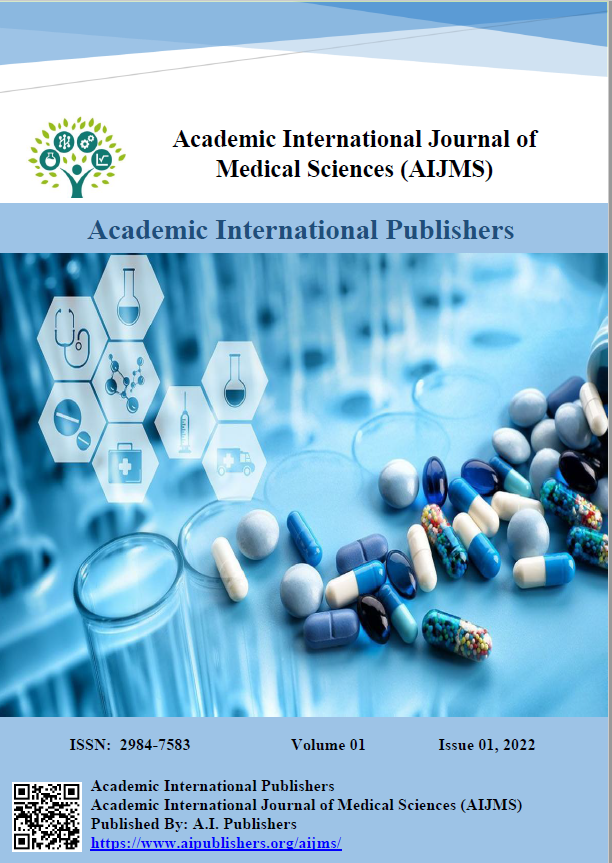Using Colocynth Extract as an Antibacterial Against Tooth Decay
DOI:
https://doi.org/10.59675/M324Keywords:
Drug-resistant germs, Citrullus colocynthis, Dental caries, PhytochemicalsAbstract
The past few decades have witnessed the emergence of drug-resistant germs, which has contributed to the search for bioactive substances effective against these microbes. Plant-derived phytochemicals, which can be taken from any part of the plant, including the root, stem or flower, have shown beneficial therapeutic properties. Citrullus colocynthis's ethanolic extract has been observed to have inhibitory effects on Streptococcus mutans. The aim of the current literature review was to explore how dental caries can be treated using herbal products and their secondary metabolites. The studies included in our review were all conducted either in the laboratory or inside the body to determine the extent of the effect of this plant on bacteria. The number of original studies using different extracts of Citrullus colocynthis was 6, with the highest concentration was (16.384 mg/mL) and the lowest MBC (1.5 mg/mL) aqueous and ethanolic extract, respectively, while the lowest MIC was 0.37 mg/mL aqueous extracts, and the highest 1 mg/mL ethanolic extract. We concluded in the current study that further studies are needed on this topic to test the possibility of using the extract safely internally and externally, given the emergence of bacteria resistant to known antibiotics.
References
Tahmasebi E, Yazdanian M, Tebyaniyan H, Soudi A, Ranjbar R, Moghaddam M, et al. The antifungal and antibacterial effect of Citrullus colocynthis: in vitro study. Open Access Maced J Med Sci. 2022.[Google Scholar]
Kannan S, Rajan S. Antibacterial effect of Citrullus colocynthis (L.) Schard. Stud Indian Place Names. 2020;40(12):2246-53.[Google Scholar]
Li Q, Munawar M, Saeed M, Shen J, Khan M, Noreen S, et al. Citrullus colocynthis (L.) Schrad (bitter apple fruit): promising traditional uses, pharmacological effects, aspects, and potential applications. Front Pharmacol. 2022;12.[Google Scholar].
Refaey MS, Abosalem EF, El-Basyouni RY, Elsheriri SE, Elbehary SH, Fayed MA. Exploring the therapeutic potential of medicinal plants and their active principles in dental care: a comprehensive review. Heliyon. 2024;10(18).[Google Scholar]
Zargaran A, Zarshenas MM, Karimi A, Yarmohammadi H, Borhani-Haghighi A. Management of stroke as described by Ibn Sina (Avicenna) in the Canon of Medicine. Int J Cardiol. 2013;169(4):233-7.[Google Scholar]
Vernet-Crua A, Cruz DM, Mostafavi E, Truong LB, Barabadi H, Cholula-Díaz JL, et al. Green-synthesized metallic nanoparticles for antimicrobial applications. In: Nanomedicine. Cambridge: Woodhead Publishing; 2023. p. 297-338.[Google Scholar]
Tahmasebi E, Raeisolvaezin K, Yazdanian M, Hajisadeghi S, Mirnejad R. Properties of Citrullus colocynthis as a pulpotomy medicament: an animal study. Open Dent J. 2025;19(1).[Google Scholar]
Kapoor M, Kaur N, Sharma C, Kaur G, Kaur R, Batra K, et al. Citrullus colocynthis an important plant in Indian traditional system of medicine. Pharmacogn Rev. 2020;14(27).[Google Scholar]
Ambulkar S, Tale V, Khilari S. Evaluation of the antibacterial potential of traditional medicinal plants against bacteria isolated from dental caries. J Pure Appl Microbiol. 2021;15(3):1204-11.[Google Scholar]
Sindhu HA, Afzal M, Shahid I. Pharmacological activities and in-silico studies of bioactive compounds identified in organic fractions of the methanolic extract of Citrullus colocynthis. Dose Response. 2023;21(3):15593258231187357.[Google Scholar]
Falih HY, Shaker ZF, Abed HH. Evaluation of the antibacterial activity of Citrullus colocynthis extracts (in vitro study). Al-Qadisiyah J Pure Sci. 2021;26(4):175-80.[Google Scholar]
Kafshgari HS, Yazdanian M, Ranjbar R, Tahmasebi E, Mirsaeed SRG, Tebyanian H, et al. The effect of Citrullus colocynthis extracts on Streptococcus mutans, Candida albicans, normal gingival fibroblast and breast cancer cells. J Biol Res Bollett Soc Ital Biol Sper. 2019;92(1).[Google Scholar]
Amini SAR, Jamali B, Aliyari K, Shakerin H. Citrullus colocynthis (bitter apple) extracts shows strong antibacterial effects against dental infection pathogens. Life Sci Student J. 2025;3(2):38-44.[Google Scholar]
Ghahramani Y, Mohammadi N, Baghaei S, Jahandizi NG. Time-dependent antibacterial effects of Citrullus colocynthis seed extract compared to calcium hydroxide in teeth infected with Enterococcus faecalis. J Dent. 2024;25(1):77.[Google Scholar]
Barakian Y, Khalife Gholi M, Abolhasani H, Salman M. In vitro study of the antibacterial effect of aqueous and ethanolic extracts of Citrullus colocynthis on Streptococcus mutans and Lactobacillus acidophilus bacteria. J Mashhad Dent Sch. 2022;46(1):17-24.[Google Scholar]
Marzouk B, Marzouk Z, Haloui E, Fenina N, Bouraoui A, Aouni M. Screening of analgesic and anti-inflammatory activities of Citrullus colocynthis from southern Tunisia. J Ethnopharmacol. 2010;128(1):15-19.[Google Scholar]
Gurudeeban S, Ramanathan T, Satyavani K, Dhinesh T. Antimicrobial effect of coastal medicinal plant Citrullus colocynthis against pathogenic microorganisms. Afr J Pure Appl Chem. 2011;5(5):119-22.[Google Scholar]
Bnyan I, Hasan H, Ewadh M. Antibacterial activity of Citrullus colocynthis against different types of bacteria. Adv Life Sci Technol. 2013;7:48-51.[Google Scholar]
Azizi S, Mohamad R, Mahdavi Shahri M. Green microwave-assisted combustion synthesis of zinc oxide nanoparticles with Citrullus colocynthis (L.) Schrad: characterization and biomedical applications. Molecules. 2017;22(2):301.[Google Scholar]
Downloads
Published
Issue
Section
License
Copyright (c) 2025 Academic International Journal of Medical Sciences

This work is licensed under a Creative Commons Attribution 4.0 International License.





